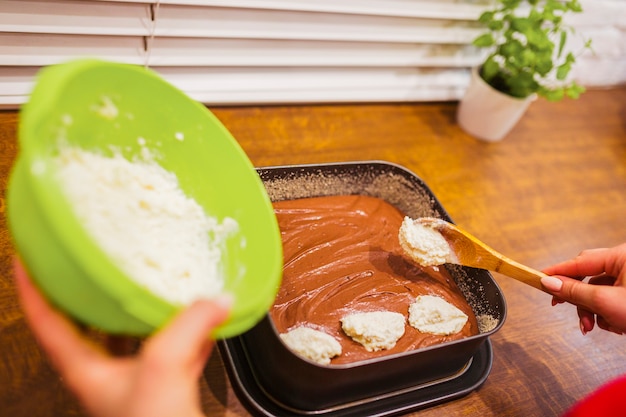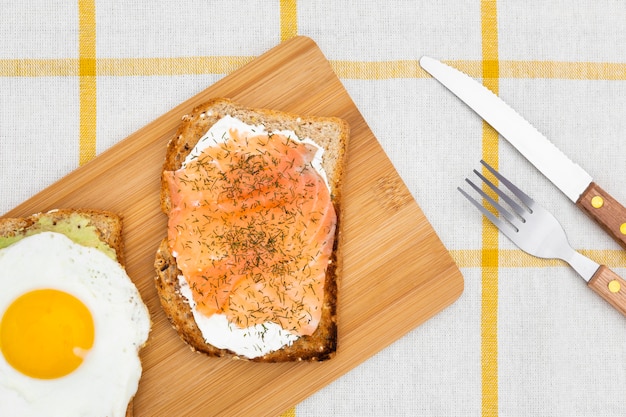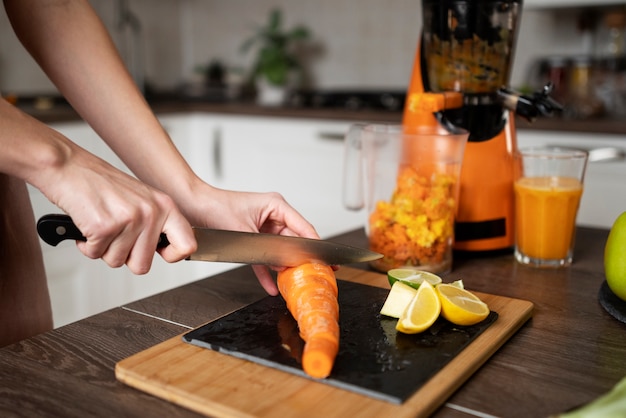(Part 1) Picking the perfect salmon

Choosing Your Salmon: The Foundation of a Delicious Dish
The first step to a fantastic salmon dish is selecting the right fish. It might seem obvious, but I've learned the hard way that a less-than-perfect fillet can really ruin the whole experience. Here's what you should look for: Freshness is King: The flesh should feel firm and springy to the touch, not mushy or soft. Give it a sniff - there should be no unpleasant odours. Colour Speaks Volumes: A good salmon fillet will boast a deep, vibrant orange-pink hue. A paler shade might indicate the fish isn't as fresh or has been frozen. Wild vs. Farmed: When possible, I always opt for wild-caught salmon. It generally has a more intense flavour and a lower environmental impact. However, farmed salmon is readily available and often a more affordable option. Size Matters: The size of the fillet depends on the number of people you're serving and your chosen cooking method. For smaller portions, a thinner fillet will do the trick, but for a whole-fish bake, you'll want something chunkier.Storing Salmon for Maximum Freshness
You've found the perfect fillet, now it's time to store it properly. You wouldn't believe the number of times I've had to toss out fish because it wasn't stored correctly! Here's how to keep your salmon at its best: Refrigerate ASAP: Get that salmon straight into the fridge the moment you get home. Store it on a plate, covered with cling film, and keep it in the coldest part of the fridge. Freezing for Later: If you need to freeze your salmon, wrap it tightly in cling film and then in foil. This helps prevent freezer burn and keeps the fish fresh.(Part 2) cooking salmon to perfection: Methods for Every Occasion

Pan-Searing: A Quick and Delicious Technique
Pan-searing is my go-to method for salmon. It creates a gorgeous golden crust that's both visually appealing and incredibly flavourful.Here's how to pan-sear like a pro:
1. Heat Your Pan: Start by heating a heavy-bottomed frying pan over medium-high heat. Add a drizzle of oil, preferably olive oil, and wait until it shimmers.2. Season with Confidence: Season your salmon fillets generously with salt and black pepper. I often add a pinch of paprika or chilli flakes for a little extra oomph. 3. Cook with Care: Place the salmon fillets in the hot pan, skin-side down. Cook for 3-4 minutes, or until the skin is crispy and golden brown. 4. Flip and Finish: Carefully flip the fillets and cook for another 2-3 minutes, until the fish is just cooked through. You'll know it's done when the flesh is opaque and flakes easily with a fork.Baking for Effortless Elegance: A Hands-Off Approach
baking salmon is an absolute breeze, making it perfect for large gatherings or if you're looking for a hassle-free cooking method.Here's how to bake salmon to perfection:
1. Preheat Your Oven: Set your oven to 180°C (350°F). 2. Prepare Your Dish: Line a baking sheet with parchment paper or use a baking dish. 3. Season and Arrange: Season your salmon fillets with salt, pepper, and any other herbs or spices you desire. Place them on the prepared baking sheet. 4. Bake to Perfection: Bake the salmon for 12-15 minutes, depending on the thickness of the fillets. It should be cooked through and flaky.Grilling for Smoky Flavours: Summertime Delight
For that irresistible smoky flavour, grilling is the way to go. It's perfect for summer BBQs or any time you want a bit of char on your salmon.Here's how to grill salmon like a champion:
1. Preheat Your Grill: Heat your grill to medium-high heat. 2. Prepare the Fish: Season your salmon fillets with salt, pepper, and any other spices you like.3. Grill it Up: Place the salmon fillets on the grill and cook for 4-5 minutes per side, or until the fish is cooked through.slow cooking for Tender Salmon: A Weeknight Winner
Slow cooking is a fantastic option for achieving exceptionally tender and flaky salmon. It's ideal for busy weeknights when you need a delicious meal without a lot of fuss.Here's how to slow-cook salmon to perfection:
1. Prepare Your slow cooker: Lightly oil the bottom of your slow cooker. 2. Season and Layer: Season your salmon fillets with salt, pepper, and any other herbs or spices you prefer. Place them in the slow cooker.3. Cook it Low and Slow: Cook the salmon on low heat for 4-6 hours, or until it is cooked through and flakes easily.(Part 3) Mastering the Art of Doneness: Recognizing the Signs of a Perfectly Cooked Salmon

The Flake Test: A Classic Method
The most reliable way to check if your salmon is cooked through is the flake test. Simply insert a fork into the thickest part of the fillet. If the flesh flakes easily, it's done. If it's still sticky or resists the fork, it needs a little more time.The Temperature Test: For Precise Results
For a more precise measure, you can use a meat thermometer. The internal temperature of cooked salmon should reach 145°F (63°C).The Appearance Test: A Visual Cue
While not foolproof, you can also check the colour of the salmon. The flesh should be opaque and a pale pink colour when cooked through. If it's still translucent or a darker, almost raw-looking colour, it needs more time.Don't Overcook It!: The Key to juicy salmon
Overcooked salmon is a tragedy! It becomes dry, tough, and frankly, unappealing. I always err on the side of undercooking, especially when pan-searing. It's better to have a slightly pink centre than a dry, rubbery fillet.(Part 4) Elevating Your Salmon Game: Flavour Combinations and Techniques to Impress
Adding Flavor with Herbs and Spices: A Symphony of Tastes
Salmon is a blank canvas for flavour. You can add anything from classic herbs like dill and parsley to more adventurous spices like cumin, coriander, or smoked paprika.Here are some flavour combinations that I absolutely adore:
Classic Dill and Lemon: Combine fresh dill, lemon zest, and a squeeze of lemon juice for a bright and refreshing flavour. Smoky Paprika and Garlic: Mix smoked paprika, garlic powder, and a pinch of cayenne pepper for a bold and smoky flavour. Mediterranean Herbs: Combine oregano, thyme, rosemary, and a pinch of salt for a fragrant and aromatic flavour.Glazing for Shine and Flavor: A Finishing Touch
Adding a glaze to your salmon adds a beautiful shine and a burst of flavour. You can use store-bought glazes or create your own.Here are a few glaze ideas that I've found to be winners:
honey mustard glaze: Combine honey, Dijon mustard, and a splash of lemon juice. Maple Syrup Glaze: Mix maple syrup with a little soy sauce and a pinch of ginger. Teriyaki Glaze: Combine soy sauce, mirin, brown sugar, and a splash of sake.side dishes for a Complete Meal: Pairing Salmon with Perfection
A perfectly cooked salmon fillet deserves a good side dish. I like to keep it simple and let the salmon shine.Here are a few side dish ideas that complement salmon beautifully:
Roasted Vegetables: Roasted vegetables like asparagus, broccoli, or Brussels sprouts complement the salmon beautifully. Green Salad: A simple green salad with a light vinaigrette adds a touch of freshness to the meal. Wild rice pilaf: For a more substantial side dish, try a wild rice pilaf with toasted pecans and dried cranberries.(Part 5) Tips and Tricks: Mastering the Art of Salmon Perfection
Skin On or Skin Off? A Matter of Preference
It really comes down to personal preference! I usually cook salmon with the skin on, as it helps to prevent the fish from drying out and adds a bit of extra flavour. However, if you find the skin a bit off-putting, you can always remove it before cooking.The Importance of Rest: Allowing Flavours to Mingle
Once your salmon is cooked, let it rest for a few minutes before serving. This allows the juices to redistribute and ensures a more tender and juicy fillet.Don't Be Afraid to Experiment: Unleash Your Culinary Creativity
There are endless possibilities when it comes to cooking salmon. Don't be afraid to experiment with different flavours, cooking methods, and side dishes. You might just discover your new favourite way to cook this delicious fish!(Part 6) A Few of My Favourite Recipes: Inspiring Your Next Salmon Adventure
Here are a few of my go-to salmon recipes, each offering a unique and delicious flavour profile: Pan-Seared salmon with Lemon and Dill Sauce: This classic recipe is easy to make and absolutely delicious. The pan-seared salmon is perfectly cooked and the lemon and dill sauce is light and refreshing. baked salmon with Roasted Vegetables: This is a hearty and healthy meal that's perfect for a weeknight dinner. The salmon is baked to perfection and the roasted vegetables are packed with flavour. grilled salmon with Mango Salsa: This is a delicious and summery dish that's perfect for grilling season. The salmon is grilled to perfection and the mango salsa adds a sweet and tangy flavour.(Part 7) Salmon Substitutes: Expanding Your Culinary Horizons
While salmon is a fantastic choice, there are a few other fish that can be cooked in similar ways.Here are a few alternatives to explore:
Trout: Trout has a delicate flavour and a firm texture that's similar to salmon. Mackerel: Mackerel is a richer, more oily fish with a slightly stronger flavour. Tuna: Tuna can be cooked in a similar way to salmon, but it has a firmer texture and a more pronounced flavour.(Part 8) FAQs: Answering Your Burning Questions
What is the best way to prevent salmon from sticking to the pan?
Make sure your pan is properly heated before adding the salmon. Also, use a good quality oil with a high smoke point, like olive oil or avocado oil. Finally, don't overcrowd the pan - give the salmon enough space to cook evenly.How long should I cook salmon?
The cooking time for salmon will vary depending on the thickness of the fillets and the cooking method you're using. As a general rule, you can expect to cook salmon for 4-6 minutes per side on the stovetop, 12-15 minutes in the oven, and 4-5 minutes per side on the grill. However, it's always best to use the flake test and a meat thermometer to ensure the salmon is cooked through.Can I eat salmon skin?
Absolutely! Salmon skin is edible and actually quite delicious. It's crispy and flavorful, and a great source of collagen. You can cook the salmon with the skin on and eat it, or remove it before serving.What are some healthy ways to cook salmon?
Salmon is naturally a very healthy fish, and you can cook it in a variety of healthy ways. Grilling, baking, and steaming are all great options that don't require added fat. You can also try poaching salmon in a flavorful broth.What are some fun and creative ways to serve salmon?
Salmon is a versatile fish that can be served in a variety of ways. Get creative with your side dishes, sauces, and garnishes. You can also try incorporating salmon into salads, wraps, or even pasta dishes.I hope this guide has inspired you to cook salmon with confidence. Remember, practice makes perfect, so don't be afraid to experiment and find what works best for you. Happy cooking!
Everyone is watching

Corn on the Cob: The Ultimate Guide to Perfectly Cooked Ears
Healthy MealsAh, corn on the cob. Just the name evokes images of sunny days, barbecues, and that sweet, juicy flavour that ...

Perfect Pork Roast Oven Cooking Time: A Guide to Delicious Results
Healthy MealsThere's something truly satisfying about a perfectly roasted pork. The aroma alone is enough to make your mout...

Ham Cooking Time: How Long to Bake, Smoke, or Boil a Delicious Ham
Healthy MealsAh, ham. It's a classic, isn't it? A real crowd-pleaser, especially around holidays. And when done right, it'...

Scallops: The Ultimate Guide to Perfect Cooking
Healthy MealsAh, scallops. Those delicate, sweet, and utterly delicious morsels of the sea. They hold a special place in my...

Spaghetti Squash: The Ultimate Guide to Cooking and Serving
Healthy MealsRemember that time you saw spaghetti squash at the supermarket, looking all bumpy and strange, and thought, "W...
